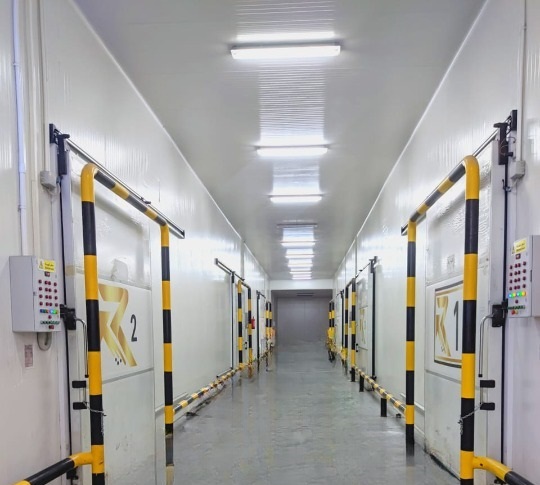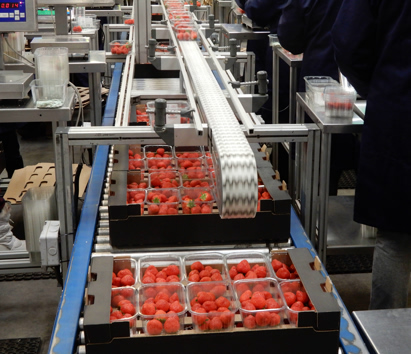Stocking & Packaging

Rayos Company is distinguished from others by the presence of the latest stations for sorting and packaging all agricultural products and crops, where fruits and vegetables are sorted and processed with the highest quality and the latest technology. This makes us one of the strong competitors in the field of export And with a distinguished quality department, the uniformity of weight and color is monitored, and using healthy materials in order to avoid any harmful substances in human health
Packaging

Fresh fruits & veggies packing process
Packing house fresh fruits and vegetables packing process is a series of steps that are followed to pack fresh fruits and vegetables. The process starts with the inspection of the produce, where they are sorted by size, type and quality. The next step is to wash the produce in order to reduce any contaminants on them. The produce is then cut into smaller pieces which will help them absorb more water during the washing process. After washing, the produce is dried using a blower or air dryer to reduce weight and get rid of excess moisture. The final step in packing house fresh fruits and veggies packing process is packaging, which includes shrink wrapping or vacuum sealing for longer shelf life.
Frozen fruits & veggies packing process
When you freeze fruits and veggies, they can last for a very long time. Freezing is also a great way to preserve fresh produce that is in season. Freezing fruits and veggies will not only lengthen their shelf life, but it will also make them last longer when you are cooking with them. Frozen fruits and vegetables are easy to thaw out and use because they don't have any ice crystals in them like the ones that come from being frozen too long.
Rayos PackHouses Services
Packing houses serve as a collection centre for fruits and vegetables prior to distribution and marketing. The types of operation carried out vary with different commodities and market requirements. Produce that are destined for export or supermarket outlets are often subjected to elaborate operations compared to local markets. Some of the operations are as follows:
Sorting and Trimming
Freshly harvested fruits and vegetables are sorted for uniformity in size, shape and varietal characteristics. Damaged, discoloured and decayed parts are removed to make the produce more attractive and prevent infection from the diseased parts.
Washing
Washing is necessary to remove extraneous materials from the field such as dirts, chemicals and latex. This is usually done before storage or immediate retailing of the produce. In order to r educe the incident of decay, chlorine is often added to the wash water.
Drying
Drying is done to remove excessive moisture from the surface of the produce. Excessive drying should be avoided to prevent wilting, shrinking and water loss.
Grading
Fresh fruits and vegetables are classified into groups according to a set of recognized criteria of quality and size, with each bearing an accepted name and size grouping.
Packaging
Produce are packed in suitable containers to provide protection against mechanical and biological damages during transportation and subsequent handling operations.
Pre-cooling
Pre-cooling is an essential step prior to storage at low temperatures. It is the rapid removal of field heat from the produce to reduce the rate of respiration, microbial activity and refrigeration load.
Storage
Storage at low temperatures has been an effective mean of extending the shelf-life of fresh fruits and vegetables. It also enables orderly marketing and distribution of produce in time of peak production. Temperature requirements for different produce may vary depending on variety, location, stage of maturity and other factors. It is important to note that cool storage is a tool used to maintain quality but not to improve it.